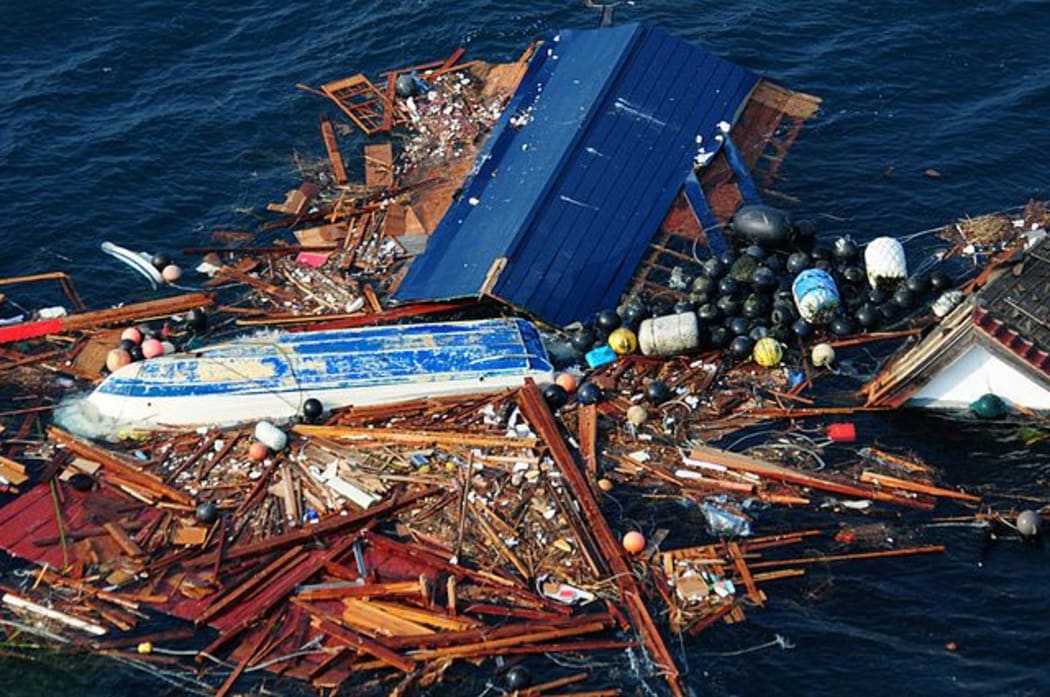Hundreds of new species have been carried across the Pacific Ocean to the shores of America on floating debris created by the 2011 Japanese earthquake and tsunami, a new study shows.

Japanese tsunami debris on the open ocean, March 2011 Photo: (Alexander Tidd - Image released by the United States Navy with the ID 110313-N-5503T-176)
The earthquake and subsequent waves pulled millions of man-made objects out to sea, ranging from pieces of plastic and polystyrene right up to boats, buoys and sections of floating dock.
And many species have been able to survive the 7,000-kilometre passage across the Pacific, reproducing along the way.
Williams College researcher James Carlton published a paper about these floating ecosystems in the journal Science.
The researchers have documented nearly 300 species of fish and invertebrates, including worms, crustaceans and shellfish, arriving from Japan in a reproductively-fit state, according to Dr Chris Smith of The Naked Scientists.
Durable man-made materials and a slow rate of travel on wind and tide have provided these species with a perfect opportunity to acclimatise en route.
So although it is still too early to tell if these new arrivals could become invasive pests in the US, the survivors of this six-year trans-Pacific voyage are likely to be "resilient and adaptable, which are common characteristics among invasive aliens".
"Most of the world's megacities are in the coastal zone and will continue to be so, greatly increasing the quantity of non-biodegradable material available to be swept from watersheds... Human-mediated amplification of marine debris provides new opportunities for species to surmount historic ocean barriers." Researchers in the journal Science

